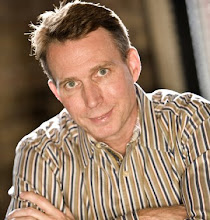After experiencing the Kigali Genocide Memorial, one of the most profound and moving museum experiences I’ve ever had, we take our guests on the road south of the capital about 30 kilometers. Within minutes of leaving Kigali, the land becomes lush with flowers, banana trees, and rolling verdant hillsides. The highway is lined with people walking or pushing bicycles laden with sweet potatoes or bamboo. People are quick to smile and wave.
Just on the edge of a small town called Nyamata,
 we take a right hand turn down a dirt road to the catholic church. It’s now a genocide memorial, and the pews are lined with stacks of the clothes taken from the 6,800 people massacred inside this church where they had fled for refuge. The ceiling is pocked with holes from bullets and grenade shrapnel. We were met by Charles, a 23 year old who was 8 years old at the time of the genocide. He was one of the seven people who survived the massacre in the church. He hid himself under the dead body of his twin brother until the genocidaires left. Back behind the church are two mass graves. Charles speaks in a quiet voice, sometimes struggling with his English, sometimes with the story.
we take a right hand turn down a dirt road to the catholic church. It’s now a genocide memorial, and the pews are lined with stacks of the clothes taken from the 6,800 people massacred inside this church where they had fled for refuge. The ceiling is pocked with holes from bullets and grenade shrapnel. We were met by Charles, a 23 year old who was 8 years old at the time of the genocide. He was one of the seven people who survived the massacre in the church. He hid himself under the dead body of his twin brother until the genocidaires left. Back behind the church are two mass graves. Charles speaks in a quiet voice, sometimes struggling with his English, sometimes with the story.No matter how much you know about the genocide, nothing prepares you for this experience, and our social entrepreneurs were overwhelmed. It was a quiet ride back to our hotel.
After a two hour break, we met again for dinner. Our guest was a man who has become a good friend of our family. Sandrali is an architect (he designed the Kigali Memorial) and his wife, Immaculate, is a physician. He told his personal story, which starts with exile, returning right after the genocide with the country destroyed and bodies still on the streets, and moves through grief, reconciliation, and now hope. He was the perfect facilitator for our group’s questions, and we ended our day with a sense of the great potential that is this country, in the context of its very real recent history.
Tomorrow morning we go to the US Embassy for a briefing on USAID’s mission in the country and ways that we can help.
Time for bed...


No comments:
Post a Comment